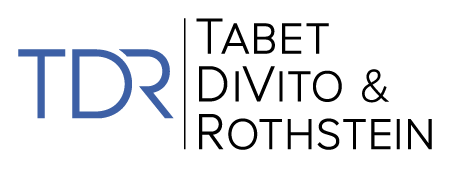The recent case Thales Visionix Inc. v. United States, Appeal No. 2015-5150 (Fed. Cir. Mar. 8, 2017), which considered technology used in helmets created for use by the pilots of F-35 Joint Strike Fighter planes, adds context to the ongoing debate about patent subject matter eligibility after Alice Corp. Pty. v. CLS Bank Intl., 134 S. Ct. 2347, 2354 (2014).
Background
To determine patent subject matter eligibility under Section 101 of Chapter 35 of the United States Code, courts use the two-step test issued in Alice Corp. Pty. v. CLS Bank Intl., 134 S. Ct. 2347, 2354 (2014). First, a court considers whether a patent is directed to a patent-ineligible concept, such as an abstract idea or natural phenomenon (Step One). Id. If the patent is directed to an idea or phenomenon, the court must consider whether a patent has an inventive concept that is an element or combination of elements sufficient to ensure that the patent in practice amounts to significantly more than a patent upon the [ineligible concept] itself (Step Two). Id.
Regarding Step One, there is no bright-line rule for subject matter eligibility, nor is there a single definition or test for what an abstract idea encompasses. Enfish, LLC v. Microsoft Corp., 822 F. 3d 1373, 1334 (Fed. Cir. 2016) (citing Alice, 134 S. Ct. at 2357). As a result, federal courts have invalidated many patents under Section 101. Additionally, the Federal Circuit rarely holds that a patent survives a 101 motion under Step One alone. See Rapid Litig. Mgmt. Ltd. v. CellzDirect, Inc., 827 F.3d 1042, 1045 (Fed. Cir. 2016); Enfish, 822 F. 3d at133738. Thales Visionix is one of these rare cases, adding needed insight on how to prove validity when a patent references natural laws or scientific calculations.
Discussion of the Case
In Thales Visionix Inc. v. United States, Thales sued the government and asserted that the helmet-mounted display system in F-35 Joint Strike Fighter planes infringed its patent for motion tracking technology used, e.g., in tracking the motion of jet aircraft pilot helmets that enabled augmented-reality displays. Slip Op. at 5. A competing defense subcontractor, Elbit Systems of America, had contracted with the U.S. to make the helmets for the F-35 Joint Strike Fighter, and it joined the case as a third-party defendant.
The U.S. Court of Federal Claims entered a judgment on the pleadings and held that the claims in Thales patent were invalid under 101 because they were directed to the abstract idea of using laws of nature governing motion to track two objects, namely the Arrhenius equation that calculates known laws of physics. The Claims Court further held that the patent claims provided no inventive concept beyond calculating the reference point of two objects using the formula. Thales appealed.
In a unanimous decision, the Federal Circuit reversed the Claims Court and remanded for further proceedings. Comparing the case to the 1981 Supreme Court decision in Diamond v. Deihr, 450 U.S. 175, 177 (1981) and the Federal Circuits own precedent in Rapid Litigation Management and Enfish, the Federal Circuit noted that a patent claim may contain a mathematical formula if it implements that formula in a process which when considered as a whole performs a function previously unknown in the art. Slip op. at 8.
The Court held that at step one, it is not enough to merely identify a patent-ineligible concept underlying the claim; we must determine whether that patent-ineligible concept is what the claim is directed to. Id. at 10 (citing Rapid Litig., 827 F.3d at 1050). In a post-Alice context, claims directed to an improvement in the process, not [the] mathematical formula itself are patent-eligible. Id. at 8.
The Federal Circuit emphasized that Thales patent claimed the unconventional approach of framing a pilots line of vision in his or her helmet to the moving platform of the pilots plane directly (point A to B) rather than by first framing the planes position relative to the earth and then the helmets position relative to the plane (point C to B, B to A). Id. at 3, 9. While the positions are calculated using the Arrhenius equation in either process, the simpler technique improves the process of providing calculated data to augmented reality display systems and eliminates complications within previous methods (i.e., mitigating rounding errors in inertial calculations, working on any type of moving platform, and requiring simpler installation than conventional systems). Id.
Under Step One, the Court held that the patent was directed to patent-eligible subject matter by claiming these improved techniques. Id. at 9-10. Because Thales satisfied Step One, the Court did not conduct a Step Two analysis.
Significance
The Federal Circuit opinion is a critical victory for Thales and for any other patent-holder whose claims incorporate a mathematical formula to solve an existing problem in the prior art. A patent involving an equation or natural law can survive subject matter eligibility review under Section 101 provided they claim a new and useful technique that performs a function previously unknown in the art. Id. at 8. The Thales decision is one of only seven Federal Circuit decisions since Alice upholding patent eligibility under Section 101.
